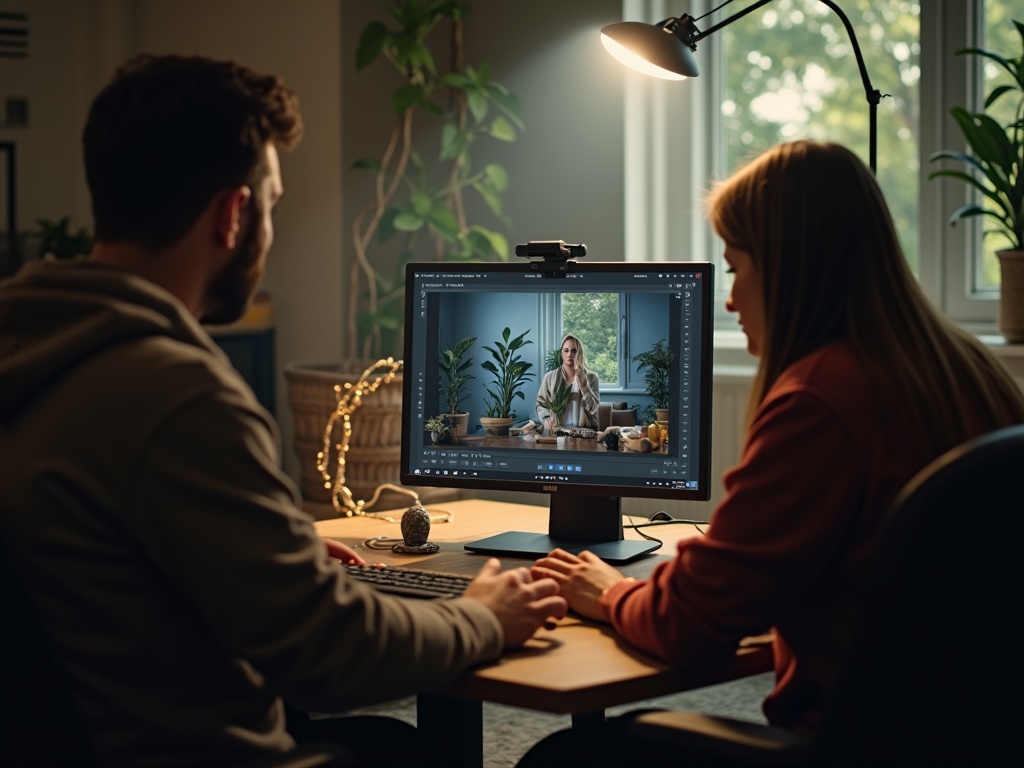Google AI Photo Editor: Revolutionizing Photo Editing with Cutting-Edge Technology
Introduction
In recent years, the domain of photo editing has undergone a substantial transformation, largely driven by the advent of AI tools. At the forefront of this evolution is the Google AI Photo Editor, a state-of-the-art application that simplifies and enhances photo editing tasks, making them more intuitive and engaging for users. With its advanced functionalities, it is not merely a tool but a revolution in the experience of photo editing, seamlessly integrating AI-powered features to improve user experience. This article explores how the Google AI Photo Editor is influencing the landscape of photo editing and its implications for future advancements.
Background
Traditionally, photo editing involved manual adjustments that required a degree of expertise and patience. Over the years, however, the field has seen a remarkable transition from these conventional methods to advanced AI-powered applications. Modern photo editing tools, like the Google AI Photo Editor, utilize machine learning to offer functionalities such as automatic photo enhancement, background removal, and indeed, entire scene reconstruction. This shift signifies a leap from basic editing to sophisticated capabilities that enhance user experience by simplifying complex tasks.
One can liken this transition to the evolution from typewriters to word processors—where once the user did all the heavy lifting, AI tools have now streamlined and automated numerous processes, thus broadening access to professional-grade editing to even novice users. The Google AI Photo Editor embodies this progression, acting as a comprehensive assistant that supports and augments the user’s creative decision-making process.
Trend
With Google’s introduction of the ‘Ask Photos’ feature, the landscape of photo editing is undergoing a significant trend shift. This feature allows users to communicate with the AI Photo Editor using both voice and text, thus making the editing process more conversational and accessible. Much like a virtual assistant, this feature empowers users to dictate their intentions directly to the application, effectively taking the ease of use to a new level.
This trend marks a turning point in user engagement with photo editing tools. By reducing the need for technical expertise, Google’s approach aligns with broader technological trends emphasizing user-centric designs. According to Chris Harrison, \”Human laziness always wins,\” suggesting that tools which reduce effort while increasing accessibility are likely to gain traction and popularity (source: Wired). This advancement is poised to change the workflow of photo editing by making powerful editing capabilities available to the average user without the steep learning curve traditionally associated with such tasks.
Insights
Expert opinions and statistical evidence provide a clearer picture of how AI tools are currently being adopted in the field of photo editing. For instance, research from the University of Michigan and Adobe Research asserts the growing acceptance of AI-driven applications in creative work. While traditionalists once viewed AI tools with skepticism, their capacity to augment creative processes is gradually altering public perception.
Chris Harrison, echoing a widely held sentiment, notes that many find AI-assisted interaction models engaging, much like using ChatGPT, which adds a layer of novelty to otherwise routine tasks. This demonstrates a shift from mere acceptance to enthusiastic adoption, further evidenced by the widespread use of AI features on platforms like Google and its integration in devices like the Pixel 10 (source: Wired). This changing landscape suggests that user experience is likely to become more enriched with the continual adoption of machine learning in creative endeavors.
Forecast
Looking towards the future, the implications of these developments in AI-driven photo editing technologies are profound. We can anticipate a continually expanding suite of AI capabilities in digital photography, further personalizing and tailoring user experiences. The ongoing evolution of machine learning algorithms will likely introduce even more sophisticated features, such as real-time augmented reality edits, predictive image adjustments, and even greater synergies between various media formats.
As these trends unfold, tools like the Google AI Photo Editor are positioned to not only redefine what is possible in photo editing but also inspire new ways of interacting with technology. As user interfaces evolve, we might see these features increasingly embedded into everyday devices, fostering a deeper integration of AI tools in our daily creative expressions.
Call to Action
In closing, users are encouraged to explore the capabilities of the Google AI Photo Editor. This powerful tool not only enhances the photo editing journey but also propels users into a new era of creativity and innovation. Engaging with these AI tools will not only streamline complex processes but also unlock new avenues for artistic expression, motivating more users to dive into the creative possibilities that these advanced technologies have to offer. So why wait? Dive into the world of AI-powered photo editing and empower your creativity today!
